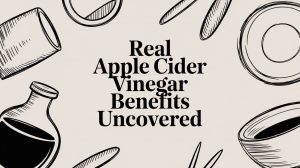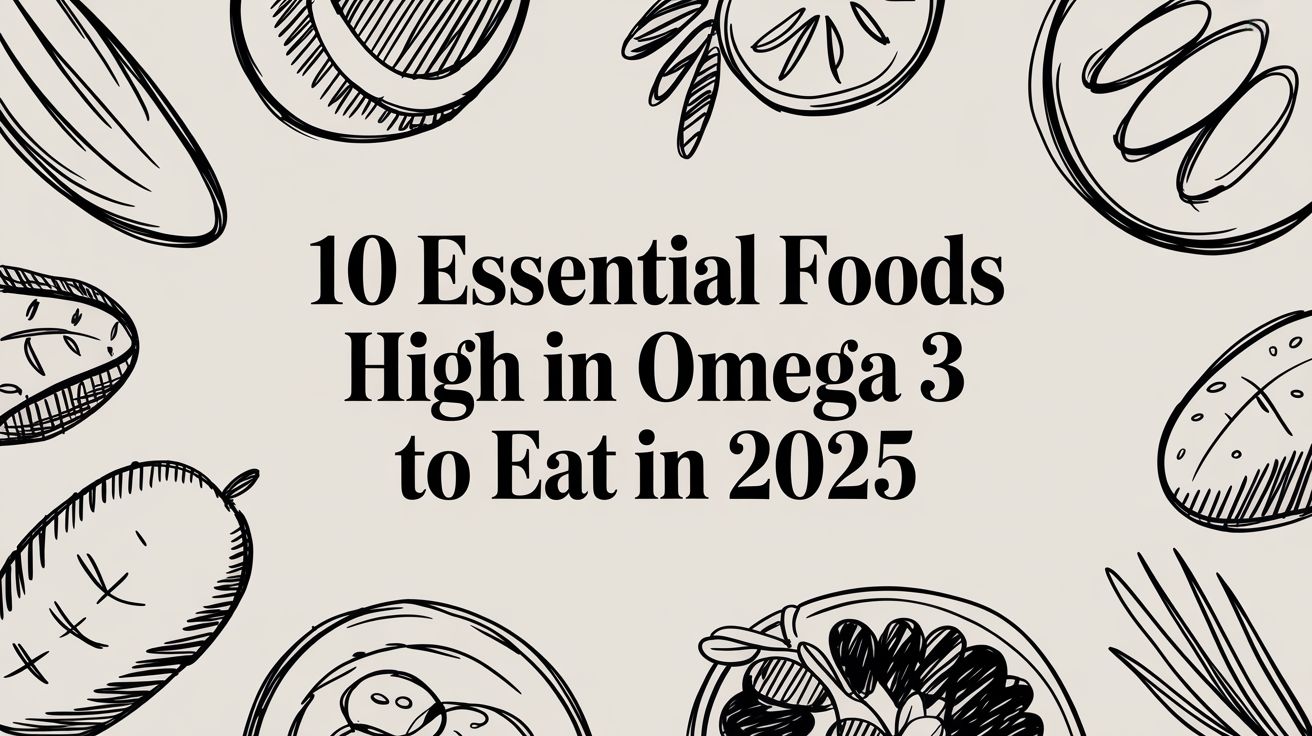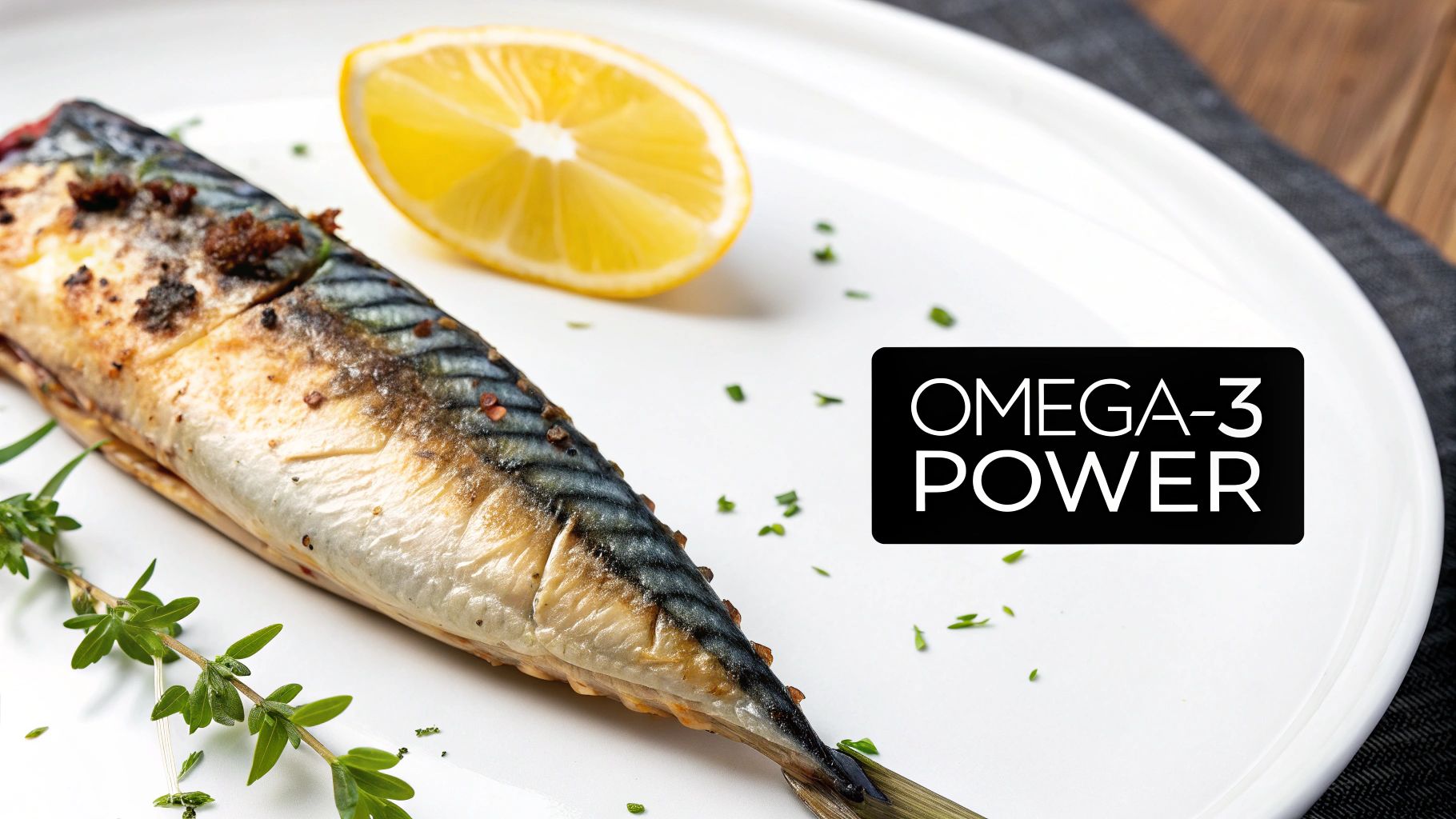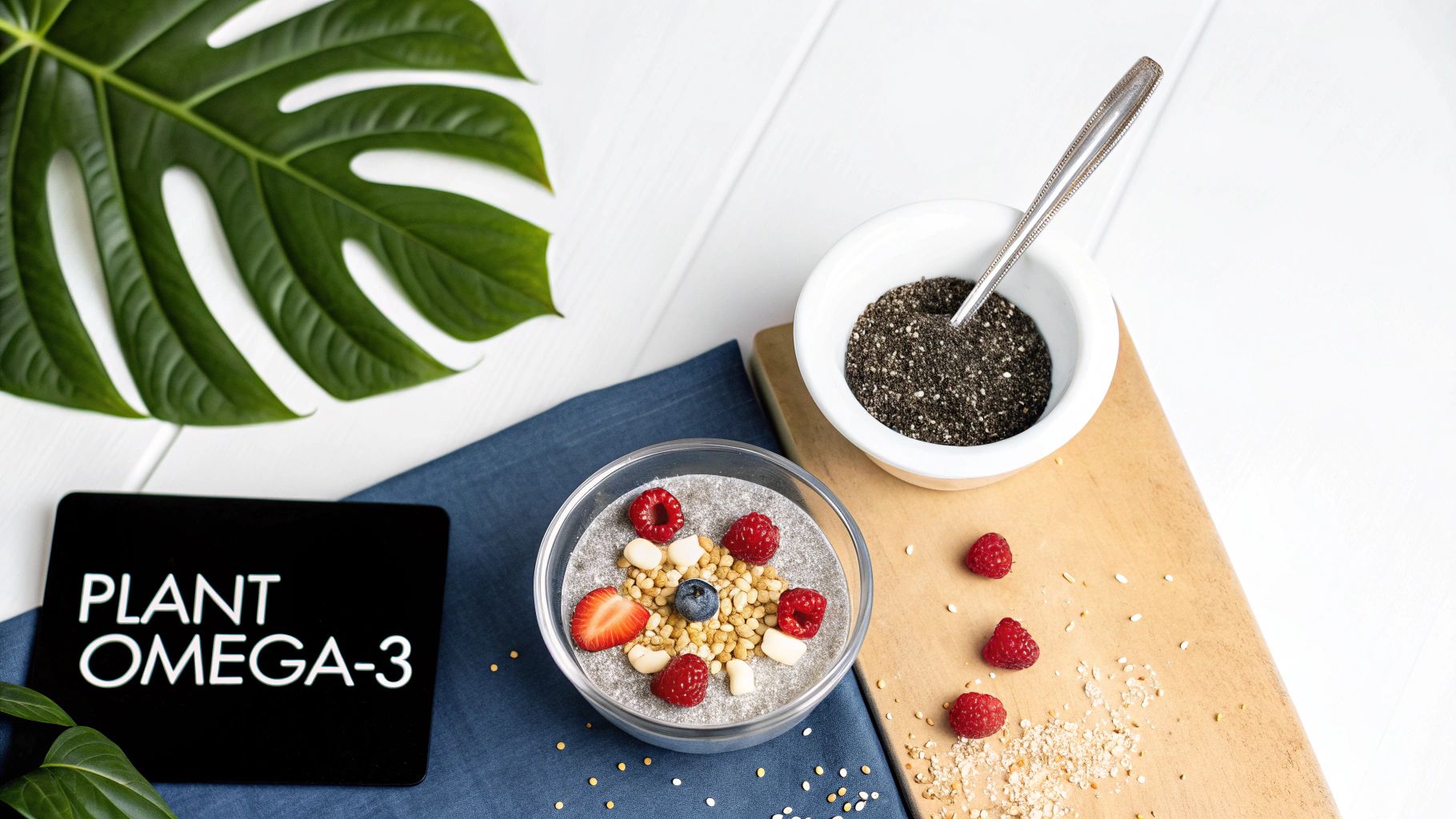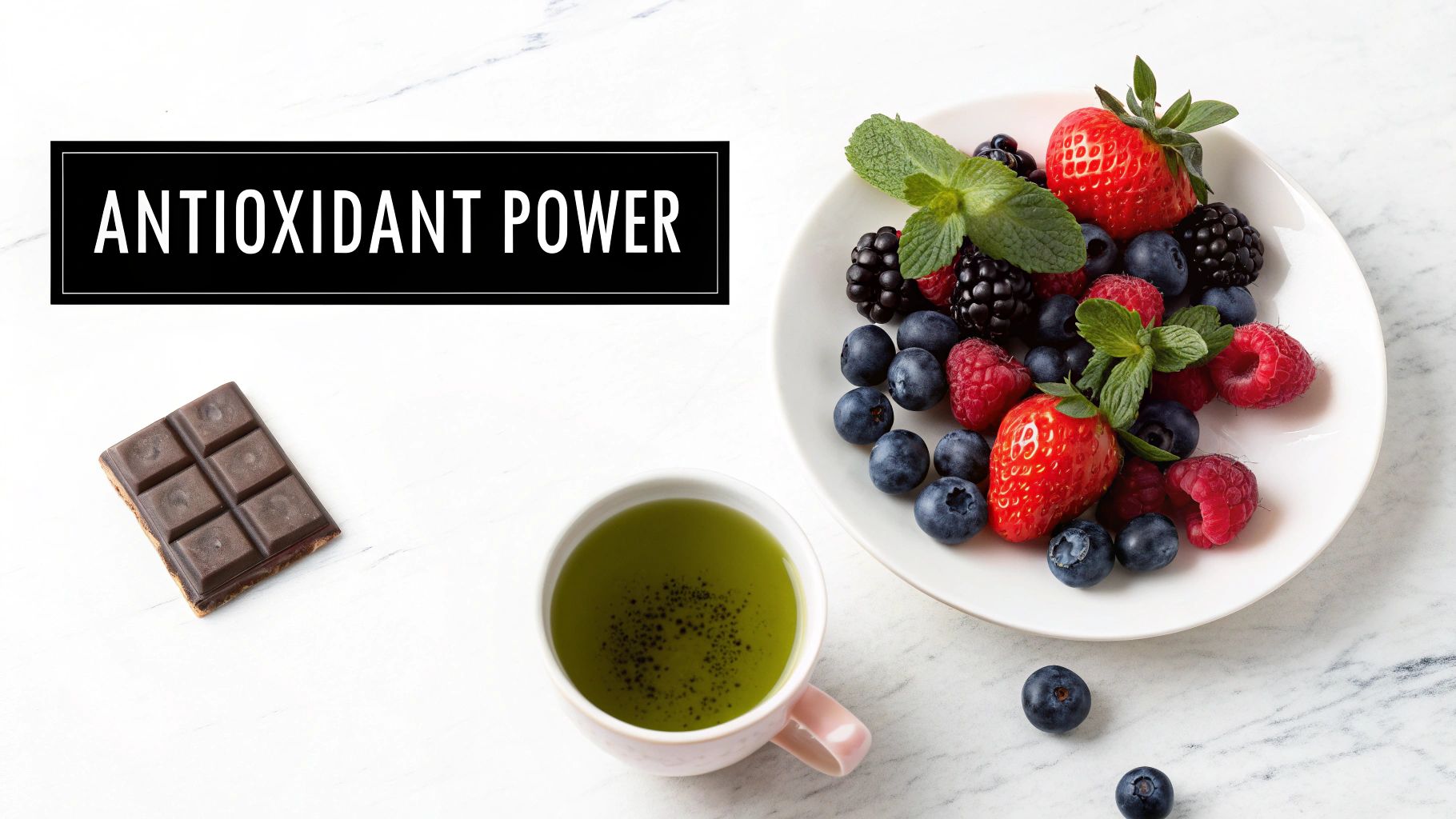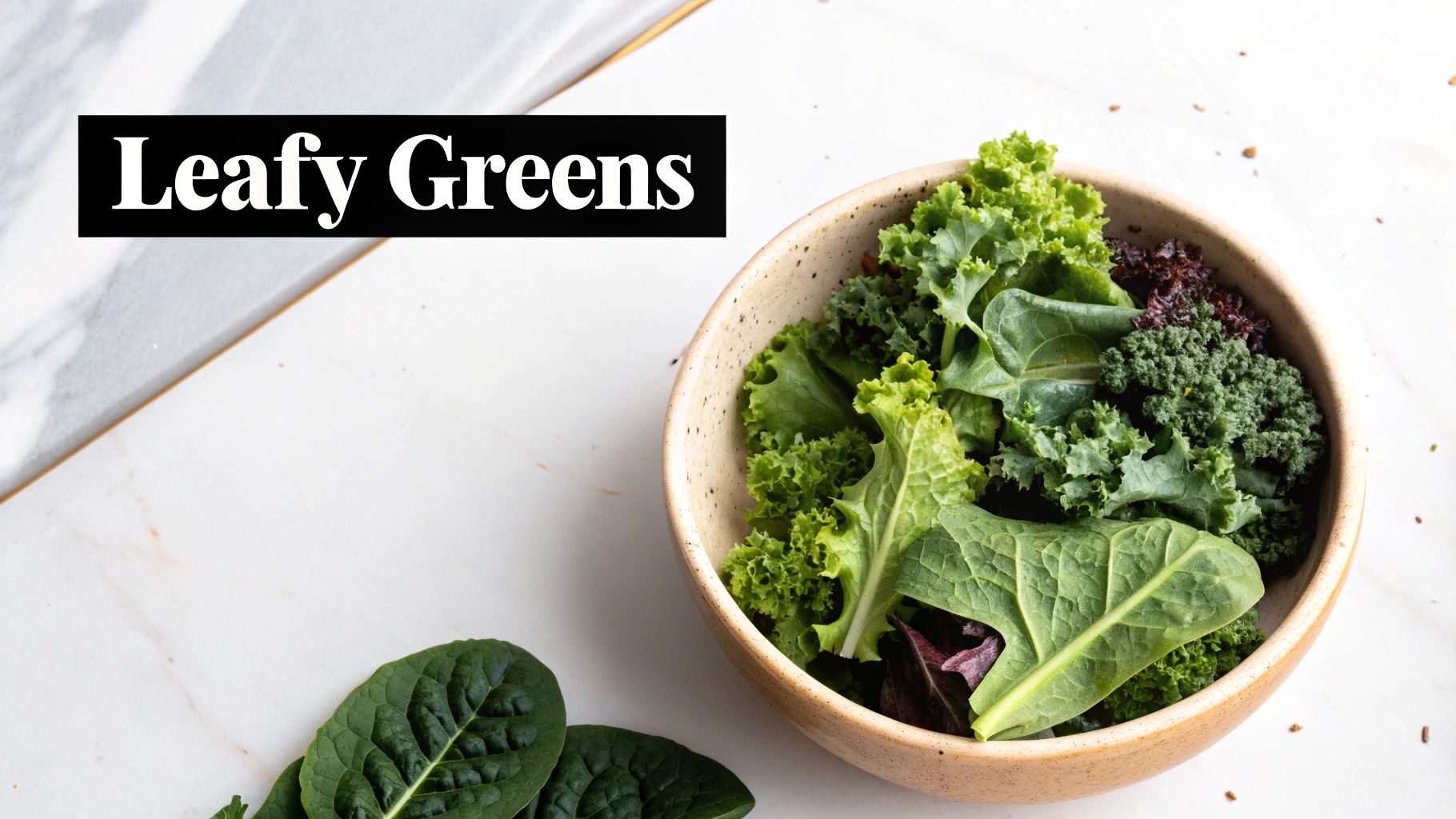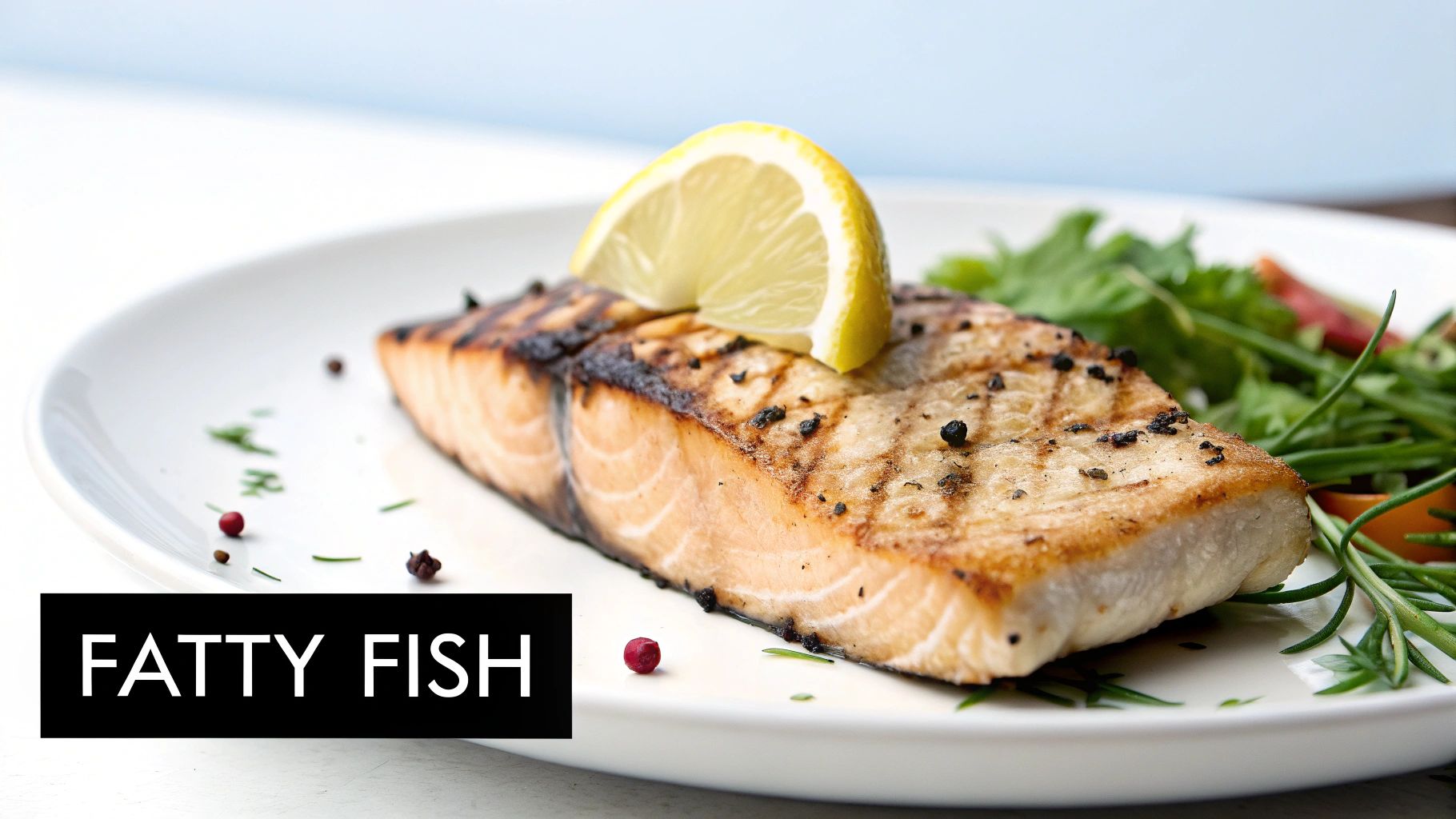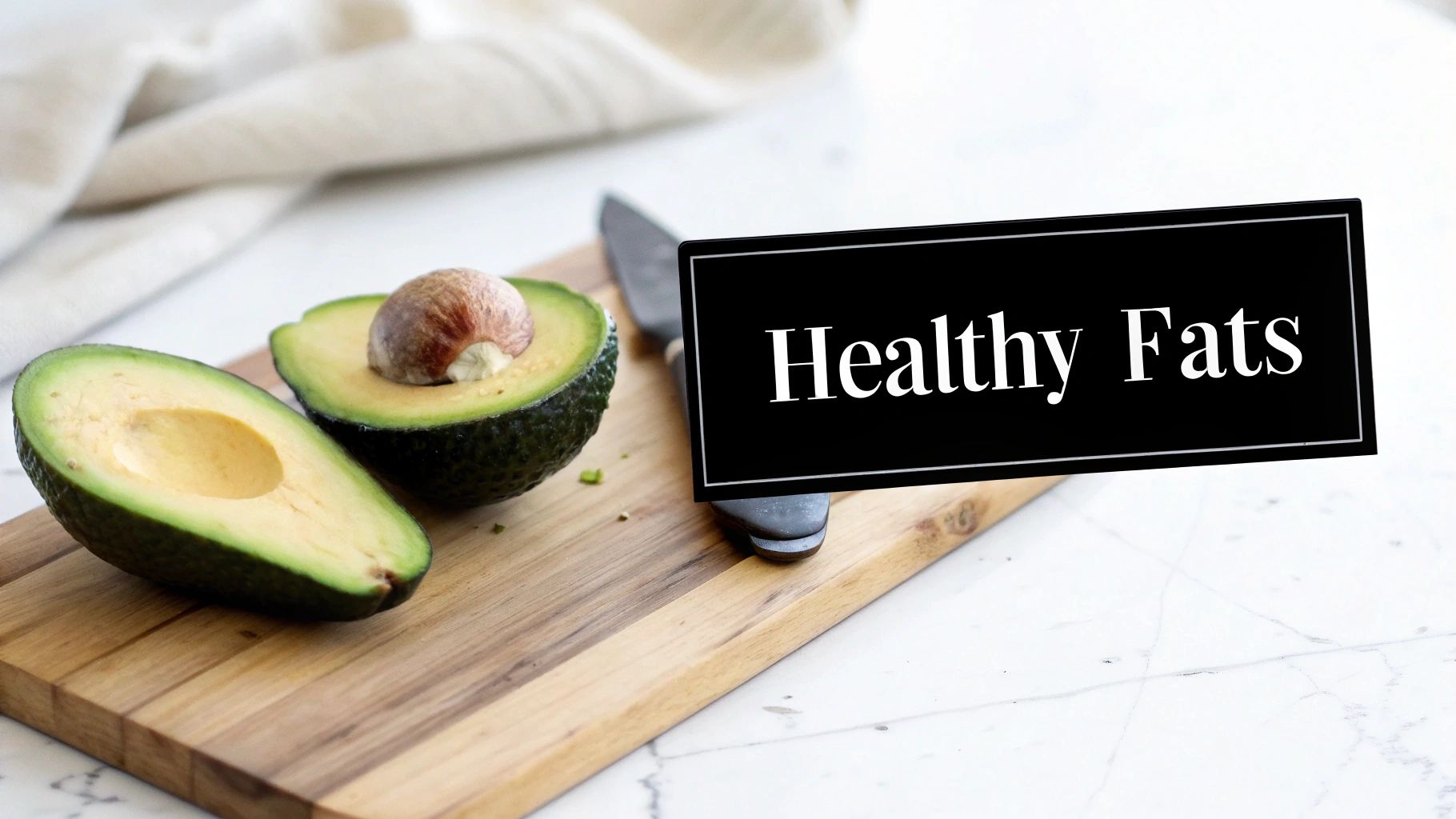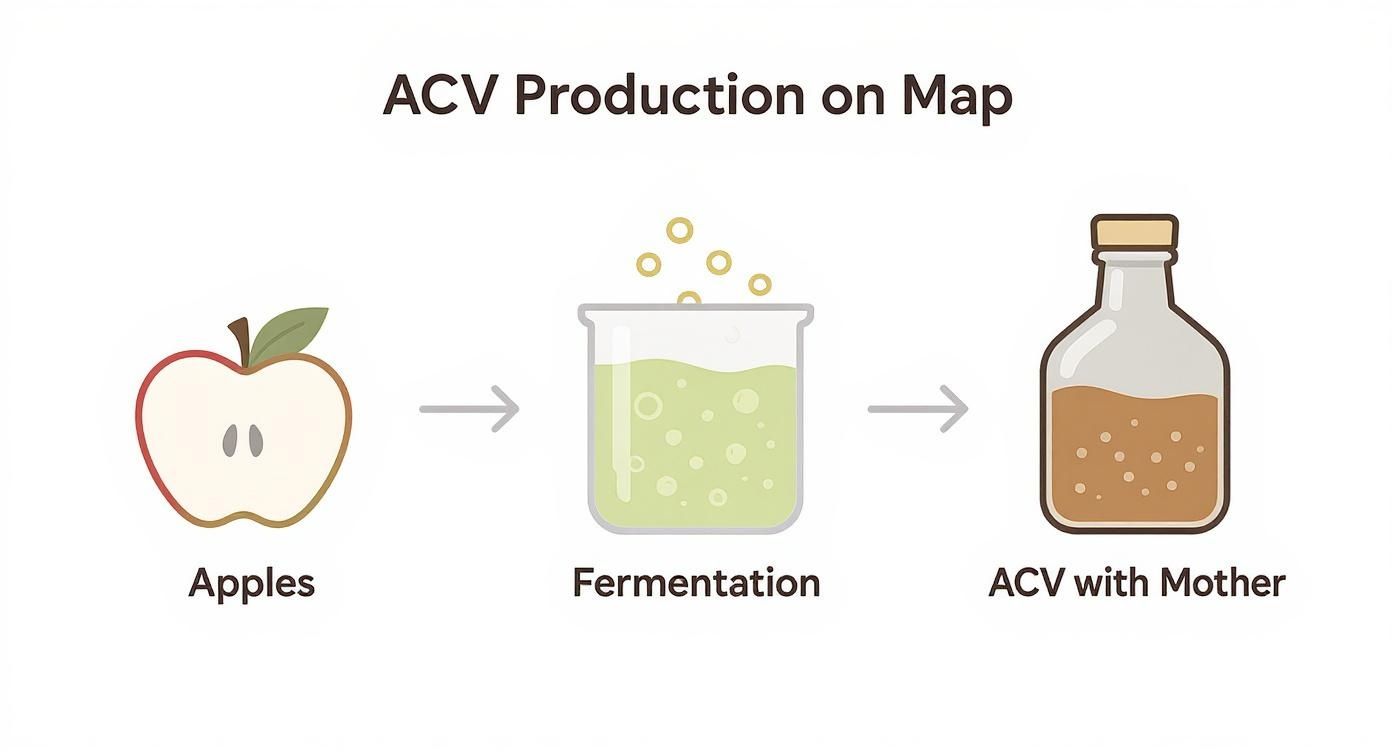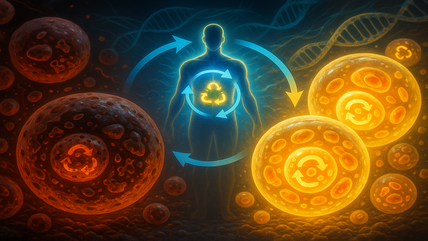Navigating blood pressure management can often feel restrictive, focusing heavily on what you must eliminate from your diet. What if the most effective strategy was not about subtraction, but about strategic addition? High blood pressure, or hypertension, is a widespread condition that quietly increases the risk for heart disease and stroke, yet the power to manage it can be found right in your kitchen. Making simple, delicious dietary changes can have a profound and positive impact on your cardiovascular health.
This is not about adopting a bland, joyless eating plan. Instead, it’s about harnessing the scientifically proven benefits of specific foods that lower blood pressure, turning your meals into a proactive tool for wellness. We will explore ten powerful food groups, moving beyond generic advice to provide the specific 'why' and 'how' behind each one’s effectiveness. You will learn about the vessel-relaxing nitrates in beets, the artery-protecting flavonoids in berries and dark chocolate, and the blood pressure-balancing potassium found in leafy greens and avocados.
This guide provides actionable, evidence-based strategies to build a heart-healthy plate that is both enjoyable and effective. We will detail how to seamlessly incorporate these items into your daily routine, offering practical tips and meal ideas. Consider this your roadmap to using kitchen staples as a first line of defense in achieving and maintaining healthy blood pressure for the long term.
1. Leafy Greens (Spinach, Kale, Swiss Chard)
When looking for the best foods that lower blood pressure, leafy greens like spinach, kale, and Swiss chard are foundational. Their power comes from a potent combination of key nutrients, particularly potassium and dietary nitrates, which work together to support cardiovascular health. They are a cornerstone of the extensively studied DASH (Dietary Approaches to Stop Hypertension) diet for this very reason.
The mechanism is twofold. First, potassium is a crucial mineral that helps your kidneys excrete more sodium through urine, effectively counteracting sodium's blood pressure-raising effects. Second, these greens are rich in dietary nitrates. Once consumed, your body converts these nitrates into nitric oxide, a molecule that relaxes and widens blood vessels (a process called vasodilation), allowing blood to flow more easily and reducing pressure on artery walls.
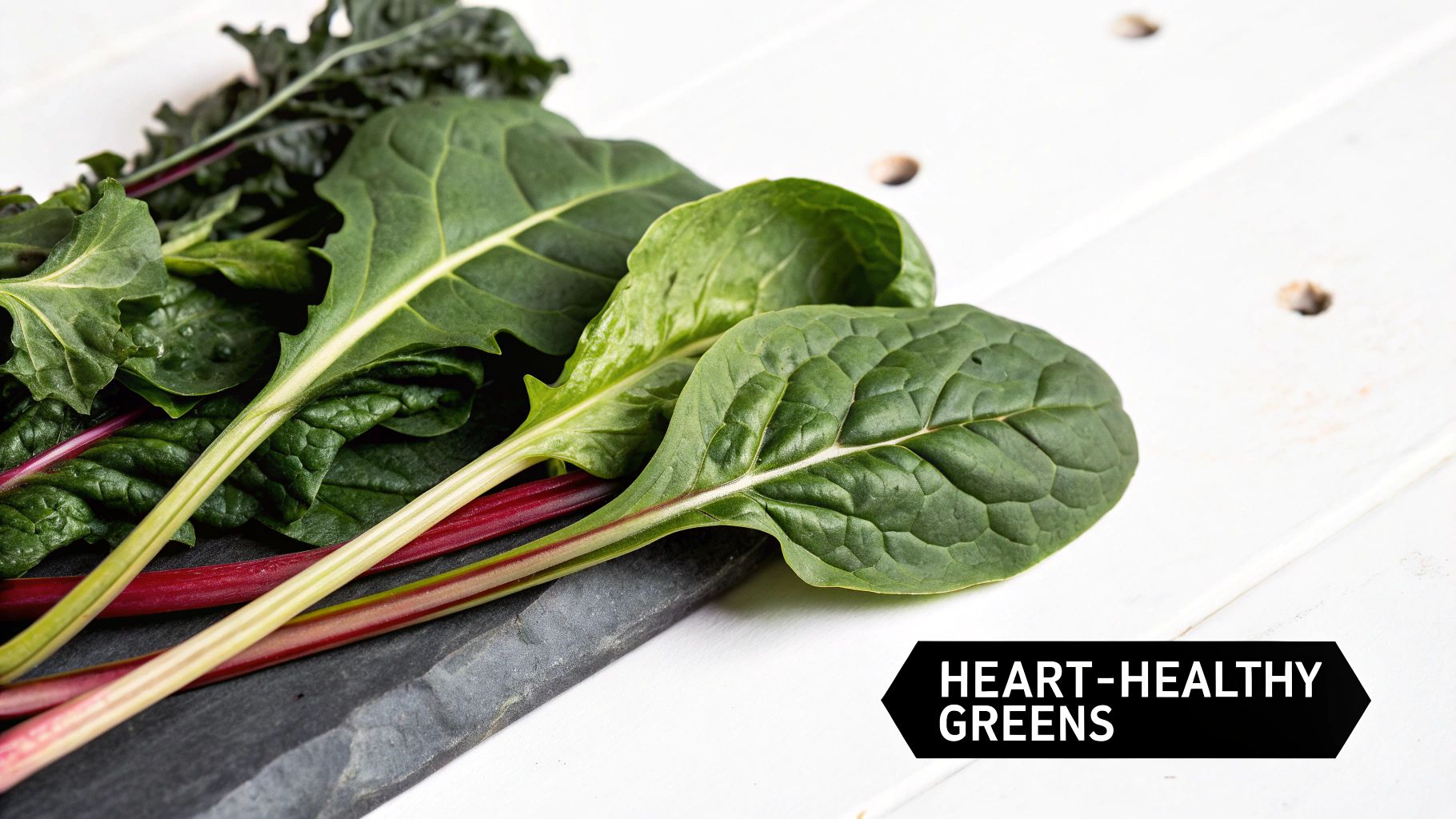
Why They Work: Evidence in Action
The effectiveness of leafy greens is well-documented. The landmark DASH diet studies showed that participants who followed a diet rich in fruits, vegetables, and low-fat dairy, with a significant emphasis on greens, experienced a drop in systolic blood pressure of up to 11 mmHg. This is a clinically significant reduction comparable to some medications. Furthermore, observational studies in Mediterranean regions have linked higher consumption of greens like Swiss chard to lower rates of hypertension.
Practical Ways to Add Leafy Greens to Your Diet
Incorporating these nutritional powerhouses into your daily routine is simpler than you might think. Aim for at least two servings per day to reap the maximum benefits.
- Boost Your Breakfast: Add a handful of spinach or kale to your morning smoothie or fold it into scrambled eggs or an omelet.
- Maximize Nitrate Intake: Enjoy raw greens in a salad for lunch. Nitrates are water-soluble and can be lost during cooking, so consuming them raw is highly effective.
- Smart Cooking Methods: If you prefer cooked greens, lightly steam or sauté them instead of boiling. This helps preserve their valuable potassium and other nutrients.
- Enhance Nutrient Absorption: Drizzle your salad or steamed greens with a healthy fat like olive oil. This will help your body absorb fat-soluble vitamins like Vitamin K, which is also abundant in these vegetables and vital for health.
2. Berries (Blueberries, Strawberries, Raspberries)
Colorful and vibrant, berries like blueberries, strawberries, and raspberries are delicious additions to any list of foods that lower blood pressure. Their effectiveness lies in their high concentration of natural compounds called flavonoids, particularly a subgroup known as anthocyanins, which give berries their rich red, purple, and blue hues. These potent antioxidants play a direct role in improving cardiovascular health and regulating blood pressure.
The primary mechanism involves anthocyanins enhancing endothelial function, which is the health of the inner lining of your blood vessels. They help your body produce more nitric oxide, the same molecule found in leafy greens, which relaxes blood vessel walls and improves blood flow. This vasodilation effect reduces arterial stiffness and lowers the pressure exerted on the artery walls with each heartbeat, contributing to a healthier circulatory system.
Why They Work: Evidence in Action
Substantial research supports the blood pressure-lowering effects of berries. A key study published in the American Journal of Clinical Nutrition, based on data from the Women's Health Study, found that women who consumed three or more servings of blueberries or strawberries per week had an 8% lower risk of high blood pressure. Similarly, other studies have shown that regular consumption of anthocyanin-rich berries can lead to a clinically relevant drop in systolic blood pressure of 3-5 mmHg.
Practical Ways to Add Berries to Your Diet
Incorporating these antioxidant powerhouses is both easy and enjoyable. Aim for about one cup of mixed berries daily to get the most significant benefits.
- Start Your Day Strong: Add a generous handful of fresh or frozen berries to your morning oatmeal, Greek yogurt, or whole-grain cereal.
- Blend Them Up: Berries are a perfect base for a heart-healthy smoothie. Combine them with spinach, a source of potassium like a banana, and a healthy fat like chia seeds.
- Choose Whole Over Juice: Eat whole berries instead of drinking berry juice. This ensures you get the full benefit of their fiber, which helps with satiety and blood sugar control, and avoids the added sugars often found in juices.
- Mix and Match: Different berries contain different types and amounts of anthocyanins. Mix blueberries, raspberries, and strawberries to get a wider spectrum of these beneficial compounds.
3. Beets and Beet Juice
Among the most potent foods that lower blood pressure, beets and their juice stand out for their rapid and measurable effects. Their power lies in being one of the richest natural sources of dietary nitrates, compounds that play a direct role in improving blood flow and cardiovascular function. This makes them a scientifically validated choice for hypertension management.
The primary mechanism is the conversion of these dietary nitrates into nitric oxide within the body. Nitric oxide acts as a powerful vasodilator, signaling the smooth muscles in your artery walls to relax. This widening of the blood vessels allows blood to circulate with less force, leading to a direct and often swift reduction in blood pressure readings.
Why They Work: Evidence in Action
The link between beets and blood pressure is supported by robust clinical evidence. A key study published in the journal Hypertension by researchers at Queen Mary University of London found that drinking just one cup (250 ml) of beet juice daily led to a significant drop in blood pressure in participants with hypertension. Another meta-analysis showed that regular beet juice consumption could lower systolic blood pressure by an average of 4-10 mmHg, an impact comparable to some single-drug therapies. This effect is so reliable that many athletes use beet juice to enhance performance by improving blood flow and oxygen delivery.
Practical Ways to Add Beets to Your Diet
Harnessing the benefits of beets is straightforward. Consistency is key, as the blood pressure-lowering effects of nitric oxide are temporary if nitrate intake ceases.
- Daily Juice Dose: Aim to drink one cup (around 250ml or 8oz) of beet juice daily for the most consistent and potent effect. Mixing it with a little apple or carrot juice can improve the earthy flavor.
- Whole Beet Benefits: Roasting whole beets is an excellent way to enjoy them as a side dish. While some nitrates can be lost to heat, roasting preserves more than boiling.
- Convenient Powder Form: Beet root powder is a convenient alternative that can be easily added to smoothies, yogurt, or even water for a quick nitrate boost.
- Consume Consistently: To maintain lower blood pressure levels, make beets or beet juice a regular part of your diet rather than an occasional addition.
4. Fatty Fish (Salmon, Sardines, Mackerel)
Among the most effective foods that lower blood pressure, fatty fish like salmon, sardines, and mackerel stand out for their exceptional cardiovascular benefits. Their power is primarily derived from a high concentration of omega-3 fatty acids, specifically eicosapentaenoic acid (EPA) and docosahexaenoic acid (DHA). These healthy fats play a critical role in reducing inflammation, improving the function of the cells lining blood vessels, and lowering triglyceride levels.
The primary mechanism involves omega-3s reducing systemic inflammation and promoting the production of compounds that relax blood vessels, thus easing blood flow. This effect is supported by high-quality protein and other nutrients that contribute to heart health without adding excess sodium, a common concern in many protein sources. The American Heart Association strongly endorses fatty fish consumption for these very reasons.
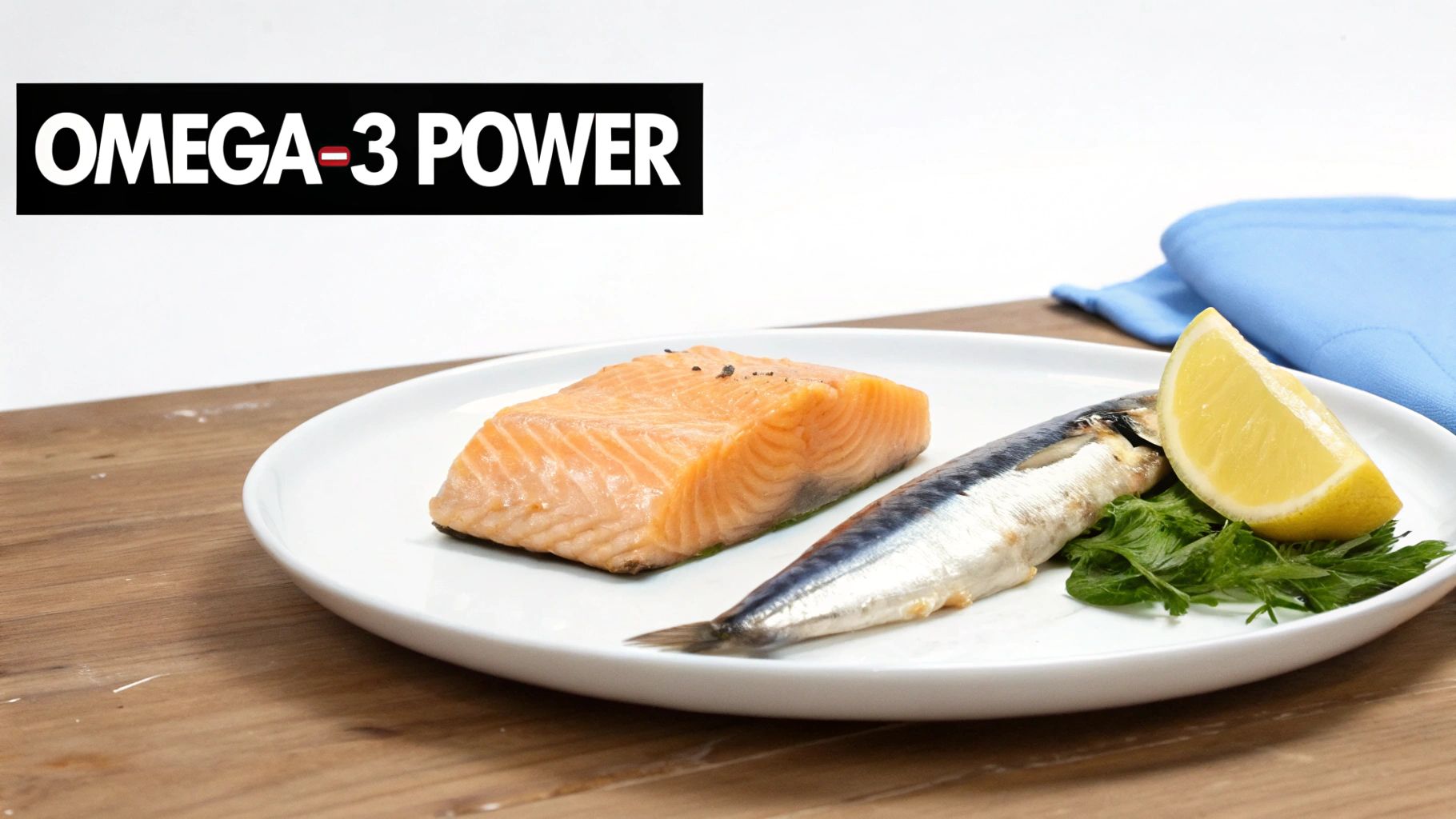
Why They Work: Evidence in Action
The link between fatty fish consumption and lower blood pressure is strongly supported by research. A comprehensive review of multiple studies found that consistent intake of omega-3s can lead to an average reduction of 4 to 5 mmHg in both systolic and diastolic blood pressure, particularly in individuals with existing hypertension. Moreover, large-scale studies like the PREDIMED trial have demonstrated that a Mediterranean diet, rich in fatty fish, significantly reduces the risk of major cardiovascular events. Populations in regions like Japan, known for high oily fish consumption, historically show lower rates of hypertension. If you want to dive deeper into this topic, you can learn more about the best sources and safe use of omega-3s.
Practical Ways to Add Fatty Fish to Your Diet
Aim for at least two 3.5-ounce servings of fatty fish per week to harness their blood pressure-lowering benefits. Here are some simple ways to incorporate them:
- Choose Healthy Cooking Methods: Grill, bake, or poach fish instead of frying to avoid adding unhealthy fats and to preserve its delicate omega-3s.
- Opt for Canned Convenience: Canned sardines and salmon are an affordable and easy way to meet your intake goals. Choose varieties packed in water or olive oil, and if you eat the soft bones in sardines, you'll get an extra boost of calcium.
- Upgrade Your Lunch: Swap out your usual sandwich meat for flaked salmon or mackerel mixed with Greek yogurt and herbs for a heart-healthy salad.
- Create a Power Combo: Serve a fillet of baked salmon alongside a large salad of leafy greens and a drizzle of olive oil for a meal that delivers a synergistic combination of potassium, nitrates, and omega-3s.
5. Potassium-Rich Foods (Bananas, Potatoes, Avocados)
When compiling a list of foods that lower blood pressure, it's impossible to overlook potassium powerhouses like bananas, potatoes, and avocados. This essential mineral plays a pivotal role in managing hypertension by directly countering the effects of sodium. It's a key component of the DASH diet, which is designed to lower blood pressure and improve overall heart health.
The mechanism is centered on a delicate fluid balance. Potassium encourages your kidneys to excrete excess sodium through urine, a critical function since high sodium levels can lead to fluid retention and increased blood pressure. Additionally, potassium helps to ease tension in the walls of your blood vessels, which further contributes to lower readings. A diet rich in potassium is one of the most effective natural strategies for maintaining a healthy cardiovascular system.
Why They Work: Evidence in Action
The link between potassium and blood pressure is strongly supported by scientific research. Multiple clinical trials have demonstrated that increasing dietary potassium intake can lead to a systolic blood pressure reduction of 3 to 6 mmHg. Furthermore, cultures with diets naturally high in potassium and low in sodium consistently show significantly lower rates of hypertension, sometimes by as much as 20-30%. The DASH diet’s recommendation of 3,500-4,700mg of potassium daily is based on this robust evidence.
Practical Ways to Add Potassium-Rich Foods to Your Diet
Achieving the recommended daily intake of potassium is straightforward with a few intentional dietary choices. The goal is to consistently include these foods in your meals.
- Make it a Mealtime Habit: Aim to include at least one potassium-rich food with every meal. A banana with breakfast, a baked sweet potato with lunch, and avocado slices with dinner can significantly boost your intake.
- Choose Nutrient-Dense Potatoes: Opt for sweet potatoes or potatoes with the skin on. The skin contains a significant amount of the potato's potassium and fiber.
- Leverage Healthy Fats: Avocados are a fantastic source of both potassium and heart-healthy monounsaturated fats. Add them to toast, salads, or smoothies.
- Combine with Sodium Reduction: For the most significant impact on blood pressure, pair your increased potassium intake with a conscious effort to reduce sodium. This synergistic approach maximizes the benefits.
6. Garlic and Garlic Supplements
For centuries, garlic has been revered not just for its culinary prowess but also for its medicinal properties. As one of the most effective foods that lower blood pressure, garlic owes its benefits to a powerful sulfur compound called allicin. Allicin is released when garlic is crushed or chopped and has been shown to improve blood flow and reduce arterial stiffness, making it a potent addition to a heart-healthy diet.
The primary mechanism involves allicin stimulating the production of nitric oxide, much like leafy greens, which helps relax and widen blood vessels (vasodilation). This process allows blood to flow more freely, subsequently lowering the pressure exerted on artery walls. Additionally, some studies suggest that compounds in garlic can inhibit enzymes that constrict blood vessels, further contributing to its blood pressure-lowering effects.
Why It Works: Evidence in Action
Garlic's impact on hypertension is well-supported by clinical research. A significant 2008 study published in the journal Hypertension found that participants taking a garlic supplement experienced a systolic blood pressure reduction of 7.7 mmHg compared to a placebo group. Further studies, particularly German research on aged garlic extract (AGE), have demonstrated even more substantial reductions, with some showing drops of up to 10 mmHg over a 12-week period. These consistent results highlight why both fresh garlic and its concentrated supplements are recommended.
Practical Ways to Add Garlic to Your Diet
To effectively harness garlic's benefits, consistency is key. Aim to consume it daily, whether in food or supplement form, for at least 8 to 12 weeks to see measurable results.
- Activate the Allicin: To maximize the formation of beneficial allicin, always crush, chop, or mince fresh garlic cloves and let them sit for about 10 minutes before introducing them to heat.
- Aim for a Daily Dose: Incorporate 2 to 3 fresh cloves into your daily cooking, such as in stir-fries, sauces, or roasted vegetables.
- Consider Supplementation: For a more concentrated and consistent dose, aged garlic extract (AGE) supplements are a reliable option. A typical dosage is between 600 and 1,200 mg daily, taken in divided doses.
- Create Synergistic Meals: Pair garlic with other heart-healthy foods like tomatoes and onions. The compounds in these vegetables can work together to provide enhanced cardiovascular benefits.
7. Dark Chocolate (70%+ Cocoa)
For those with a sweet tooth, dark chocolate is one of the more enjoyable foods that lower blood pressure. The benefit comes not from the sugar, but from its high concentration of flavonoids, specifically a compound called epicatechin. These powerful antioxidants play a direct role in improving endothelial function, which is the health of the thin membrane lining the inside of the heart and blood vessels.
The primary mechanism involves nitric oxide. Flavonoids in dark chocolate encourage the body to produce more nitric oxide, a crucial molecule that acts as a vasodilator. This means it helps relax and widen blood vessels, promoting smoother blood flow and reducing the pressure exerted on artery walls. For this effect to be meaningful, the chocolate must have a high cocoa content, typically 70% or more, as this is where the flavonoids are concentrated.
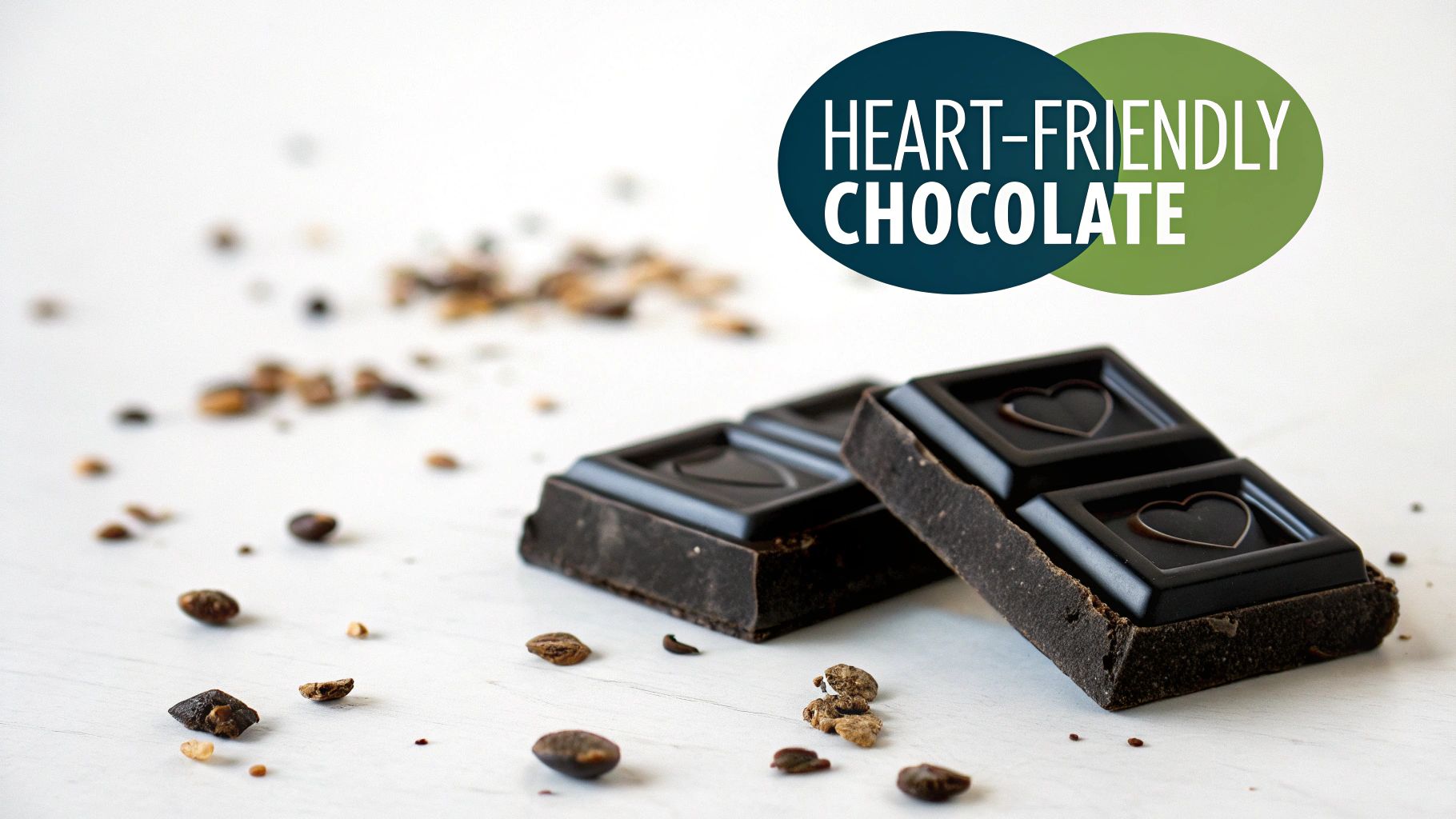
Why It Works: Evidence in Action
The link between high-flavanol cocoa and blood pressure is supported by robust scientific evidence. A meta-analysis published in the Hypertension journal found that regular consumption of cocoa-rich products could lead to a modest but significant systolic blood pressure reduction of 2-3 mmHg. Another notable German study involving 44 adults with hypertension demonstrated that a small daily portion of dark chocolate sustained these benefits over time. These findings highlight that consistent, moderate consumption is key.
Practical Ways to Add Dark Chocolate to Your Diet
Incorporating dark chocolate is simple, but portion control and cocoa content are critical. Aim for about 1-2 ounces (or 30g) per day to get the benefits without excess calories.
- Choose Wisely: Always select dark chocolate with a cocoa content of 70% or higher. The higher the percentage, the greater the flavonoid content and the lower the sugar.
- Portion Control: Use pre-portioned squares, like those from brands such as Lindt Excellence 70%+ or Ghirardelli Intense Dark, to avoid overconsumption.
- Synergistic Pairing: Pair a square of dark chocolate with berries. The combination of flavonoids from the chocolate and antioxidants from the berries offers compounded cardiovascular benefits.
- Smart Timing: Enjoy your portion in the morning or early afternoon. Dark chocolate contains small amounts of caffeine and theobromine, which could interfere with sleep for some individuals if consumed late at night.
8. Whole Grains (Oats, Brown Rice, Whole Wheat)
When compiling a list of foods that lower blood pressure, whole grains like oats, brown rice, and whole wheat are essential entries. Their benefit lies in a powerful nutrient profile rich in fiber, magnesium, and potassium, all of which contribute to cardiovascular wellness. They are a fundamental component of heart-healthy eating patterns, including the DASH and Mediterranean diets, for their proven effects on blood pressure regulation.
The primary mechanism involves their high fiber content, particularly soluble fiber like beta-glucans found in oats. This type of fiber helps reduce cholesterol and has been shown to improve the function of blood vessels. Additionally, the magnesium and potassium in whole grains work together to relax blood vessels and help balance sodium levels, creating a comprehensive approach to lowering blood pressure naturally.
Why They Work: Evidence in Action
The link between whole grain consumption and lower blood pressure is strongly supported by research. A comprehensive meta-analysis found that consuming about three servings of whole grains daily was associated with optimal blood pressure reduction. Furthermore, long-term observational studies, such as the Framingham Heart Study, have consistently shown that individuals with higher whole grain intake tend to have lower blood pressure and a reduced risk of cardiovascular disease.
Practical Ways to Add Whole Grains to Your Diet
Making whole grains a regular part of your diet is a straightforward and effective strategy. Aim for at least three servings per day to achieve the most significant benefits.
- Start Your Day Strong: A bowl of oatmeal is an excellent choice. Opt for steel-cut or rolled oats over instant varieties to maximize nutrient retention and fiber content.
- Read Labels Carefully: When buying bread or pasta, ensure the first ingredient listed is a "whole" grain, such as "whole wheat flour" or "whole oats." This guarantees you're getting the entire grain kernel.
- Make Simple Swaps: Replace white rice with brown rice or quinoa, use whole wheat bread for sandwiches, and choose whole grain pasta for your favorite dishes.
- Increase Fiber Gradually: To avoid digestive discomfort, slowly increase your intake of high-fiber foods. You can explore a structured approach by reviewing this 7-day high-fiber eating plan for guidance.
9. Legumes (Beans, Lentils, Chickpeas)
As a staple in many heart-healthy dietary patterns, legumes like beans, lentils, and chickpeas are powerful foods that lower blood pressure. Their effectiveness stems from a rich profile of fiber, potassium, and magnesium, combined with beneficial plant compounds called polyphenols. This combination supports cardiovascular health by improving blood vessel function and providing key minerals that counterbalance sodium.
The mechanism is multifaceted. The high soluble fiber content helps manage blood sugar and cholesterol levels, both of which are linked to hypertension. Meanwhile, potassium and magnesium are essential minerals that play direct roles in blood pressure regulation. Potassium aids in sodium excretion, while magnesium helps relax blood vessel walls, promoting better blood flow and reducing pressure.
Why They Work: Evidence in Action
The link between regular legume consumption and better blood pressure is supported by significant research. Clinical trials have shown that incorporating legumes into the diet can lead to a systolic blood pressure reduction of 5 to 6 mmHg, particularly when they replace refined carbohydrates. Furthermore, population studies highlight this benefit; Mediterranean and Indian populations that consume legumes four or more times a week consistently show lower rates of hypertension.
Practical Ways to Add Legumes to Your Diet
Aiming for four to five servings of legumes per week is a great goal for managing blood pressure. They are versatile, affordable, and easy to incorporate into your meals.
- Make Smart Swaps: Replace some of the meat in dishes like chili, tacos, or pasta sauce with lentils or black beans to boost fiber and minerals.
- Boost Soups and Salads: Add a can of rinsed chickpeas or kidney beans to your favorite soup or toss them into a salad for extra protein and texture.
- Choose Canned Wisely: Canned beans are a convenient option. Be sure to rinse them thoroughly under running water to remove up to 40% of the added sodium.
- Improve Digestibility: If using dried beans, soak them for at least eight hours before cooking. Adding spices like ginger or fennel during cooking can also help reduce potential gas production.
10. Low-Fat Dairy Products (Yogurt, Low-Fat Milk, Cheese)
When compiling a list of foods that lower blood pressure, low-fat dairy products like yogurt, milk, and certain cheeses are often overlooked yet highly effective. Their power lies in a synergistic blend of calcium, potassium, and high-quality protein, all of which are essential for blood pressure regulation. These foods are a key component of the DASH (Dietary Approaches to Stop Hypertension) diet, valued for their reliable contribution to cardiovascular health.
The mechanism is multifaceted. Calcium plays a direct role in helping blood vessels tighten and relax appropriately, while potassium works to counterbalance sodium and ease tension in blood vessel walls. The high-quality protein in dairy also contributes to feelings of satiety and overall metabolic health. This combination of nutrients provides a more comprehensive approach to managing blood pressure than any single mineral alone.
Why They Work: Evidence in Action
The link between low-fat dairy and healthier blood pressure is strongly supported by research. The DASH diet studies consistently show that including 2-3 daily servings of low-fat dairy contributes significantly to its blood pressure-lowering effects. Moreover, long-term observational studies like the Framingham Heart Study have found that adults consuming three or more servings of low-fat dairy per day had a 20% lower risk of developing hypertension. This demonstrates that consistent intake is key to achieving these benefits.
Practical Ways to Add Low-Fat Dairy to Your Diet
Integrating 2-3 servings of low-fat dairy into your diet is a simple and effective strategy. A single serving is typically considered one cup (8 oz) of milk or yogurt, or 1.5 ounces of natural cheese.
- Start Your Day Strong: Use low-fat milk in your morning oatmeal or cereal, or blend plain Greek yogurt into a fruit smoothie for a protein and calcium boost.
- Choose Plain Yogurt: Opt for plain, unsweetened yogurt to avoid added sugars that can counteract the health benefits. Add your own fresh berries, nuts, or seeds for flavor and extra nutrients. Fermented options like yogurt and kefir are particularly beneficial; discover more about the health advantages of fermented foods.
- Read the Labels: When selecting cheese, check the sodium content, as it can vary widely. Varieties like Swiss or fresh mozzarella are often lower in sodium than processed cheeses.
- Smart Snacking: A cup of low-fat yogurt or a small portion of low-sodium cottage cheese paired with fruit makes for an excellent, blood pressure-friendly snack.
Top 10 Blood Pressure Lowering Foods Comparison
| Item | Complexity 🔄 | Resources & Cost ⚡ | Expected Impact ⭐📊 | Ideal Use Cases 💡 | Key Advantages |
|---|---|---|---|---|---|
| Leafy Greens (Spinach, Kale, Swiss Chard) | Low — simple prep; storage required | Low cost; widely available | ⭐⭐⭐⭐ — ~8–11 mmHg systolic (DASH evidence) 📊 | Daily salads, smoothies; DASH-style meals | High K⁺ and nitrates; versatile; low calorie |
| Berries (Blueberries, Strawberries, Raspberries) | Low — wash/prepare; freezeable | Moderate cost (seasonal); frozen options | ⭐⭐ — ~3–5 mmHg systolic 📊 | Breakfast, snacks, smoothies; year-round frozen use | Rich in anthocyanins; antioxidant; enjoyable |
| Beets & Beet Juice | Low–Medium — juice prep or roast | Moderate cost; juice can be pricier | ⭐⭐⭐⭐ — ~4–10 mmHg systolic; rapid (hours) 📊 | Acute/short-term BP reduction; daily juice or powder | Very high dietary nitrates; fast, well-researched effect |
| Fatty Fish (Salmon, Sardines, Mackerel) | Medium — cooking/selection matters | Moderate–High cost; sustainability/mercury factors | ⭐⭐⭐ — ~4–5 mmHg systolic & diastolic 📊 | 2–3 servings/week for cardiometabolic health | EPA/DHA omega‑3s; anti-inflammatory; brain benefits |
| Potassium-Rich Foods (Bananas, Potatoes, Avocados) | Low — easy to include | Low–Moderate cost; widely accessible | ⭐⭐⭐ — ~3–6 mmHg systolic when increased 📊 | Daily meals emphasizing sodium reduction (DASH) | Direct K⁺ effect; many food choices; simple substitution |
| Garlic & Garlic Supplements | Low — raw/cooked or supplement | Low cost; supplement quality varies | ⭐⭐⭐ — ~5–7 mmHg (AGE shows consistent results) 📊 | Seasoning in meals; standardized supplement regimens | Allicin-driven vasodilation; immune & lipid benefits |
| Dark Chocolate (70%+ Cocoa) | Low — portion control required | Moderate cost; calorie-dense | ⭐ — ~2–3 mmHg systolic 📊 | Small daily treat; combine with berries for synergy | Flavonoids improve endothelial function; palatable |
| Whole Grains (Oats, Brown Rice, Whole Wheat) | Low — label reading & prep | Low cost; widely available | ⭐⭐⭐ — ~3–6 mmHg systolic 📊 | Daily staples (breakfast, sides); gradual fiber increase | Soluble fiber, magnesium; cholesterol and glycemic benefits |
| Legumes (Beans, Lentils, Chickpeas) | Medium — soaking/cooking (canned easy) | Very low cost; shelf-stable | ⭐⭐⭐ — ~5–6 mmHg systolic when consumed regularly 📊 | Replace refined carbs; 4+ servings weekly | High fiber/protein; satiety; improves cholesterol |
| Low‑Fat Dairy (Yogurt, Milk, Cheese) | Low — ready to consume | Low–Moderate cost; lactose considerations | ⭐⭐⭐ — ~3–5 mmHg systolic 📊 | 2–3 servings daily; DASH-style diets | Bioavailable calcium, K⁺, peptides; bone & BP benefits |
Building Your Heart-Healthy Toolkit: A Sustainable Approach
Navigating the path to better blood pressure management can feel overwhelming, but as we've explored, your plate holds immense power. The journey isn't about a radical, overnight overhaul. Instead, it's about building a sustainable, heart-healthy toolkit filled with delicious and potent foods that lower blood pressure.
We've covered a diverse lineup of nutritional powerhouses, from the nitrate-rich earthiness of beets to the omega-3 abundance in fatty fish like salmon. We've seen how the antioxidants in berries, the allicin in garlic, and the flavonoids in dark chocolate each play a unique role in supporting vascular health, promoting relaxation of blood vessels, and combating inflammation. These foods are not just individual superstars; they work synergistically within a balanced dietary pattern.
Key Takeaways for Long-Term Success
The most crucial takeaway is that small, consistent changes yield the most significant long-term results. Viewing this list not as a rigid set of rules but as a flexible menu of options is the key to lasting success. The goal is to integrate these foods into your life in a way that feels natural and enjoyable, not restrictive.
Consider these core principles as you move forward:
- Focus on Addition, Not Subtraction: Instead of dwelling on what to eliminate, concentrate on what you can add. Can you toss a handful of spinach into your morning smoothie? Can you swap your usual afternoon snack for a cup of Greek yogurt and some blueberries? This positive framing makes healthy eating feel like an upgrade, not a sacrifice.
- Embrace the Power of Synergy: These foods work best as part of a comprehensive lifestyle. Their benefits are amplified when combined with other healthy habits, such as reducing sodium intake, engaging in regular physical activity, managing stress, and prioritizing quality sleep. A morning walk followed by a bowl of oatmeal with berries is a perfect example of this powerful synergy in action.
- Listen to Your Body and Your Doctor: While the foods that lower blood pressure discussed here are backed by science, they are not a replacement for medical guidance. Always consult your healthcare provider before making significant dietary changes, especially if you are on medication for hypertension or have other underlying health conditions like kidney disease. They can provide personalized advice and ensure your dietary choices complement your overall treatment plan.
Your Actionable Next Steps
Mastering this approach means empowering yourself to take a proactive role in your cardiovascular health. It’s about transforming knowledge into daily practice. Start small to build momentum.
This week, choose just two items from our list to incorporate into your meals. Here are a few simple ideas:
- Swap your side: Replace a side of white rice or pasta with a baked sweet potato or a serving of quinoa.
- Upgrade your snack: Ditch the chips and have a small handful of walnuts with a square of 70%+ dark chocolate.
- Boost your breakfast: Add a scoop of flaxseed or a sliced banana to your morning bowl of oatmeal or yogurt.
By making these thoughtful, incremental adjustments, you are not just eating; you are actively investing in the long-term health of your heart and body. This is a journey of a thousand small, delicious steps, and you have already taken the most important one by seeking out this knowledge.
For more evidence-based guides and actionable wellness tips to support your health journey, explore the resources at Health Digest. We provide in-depth articles on nutrition, fitness, and chronic disease management to help you build a healthier, more vibrant life. Visit Health Digest to continue learning.
Article created using Outrank







